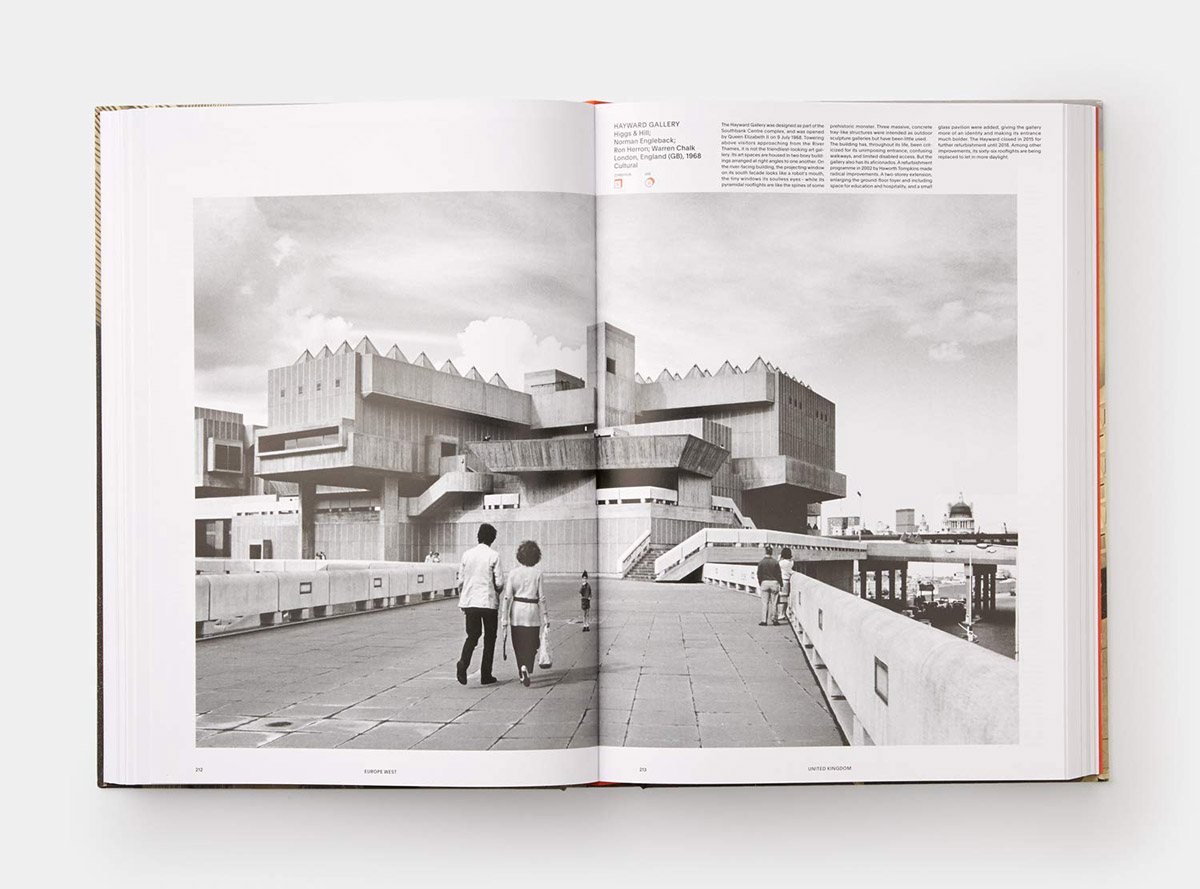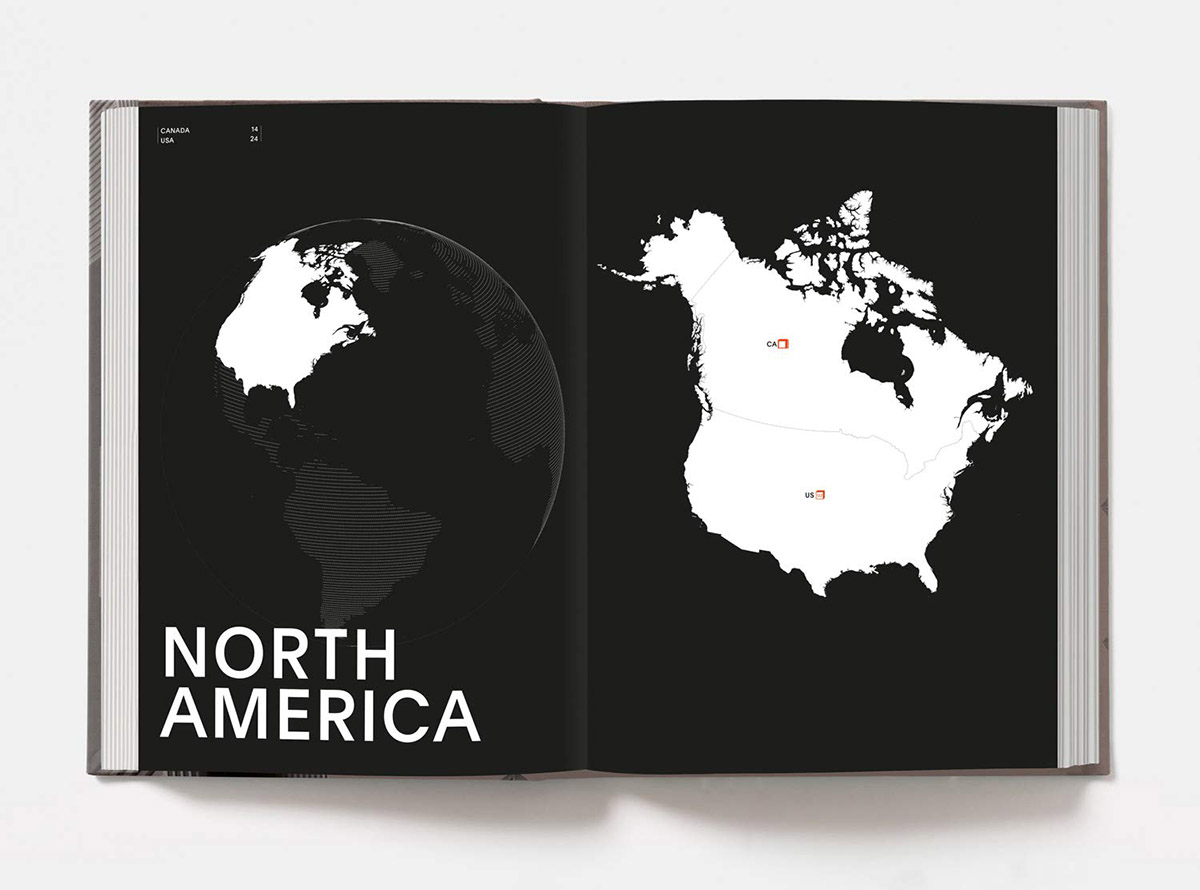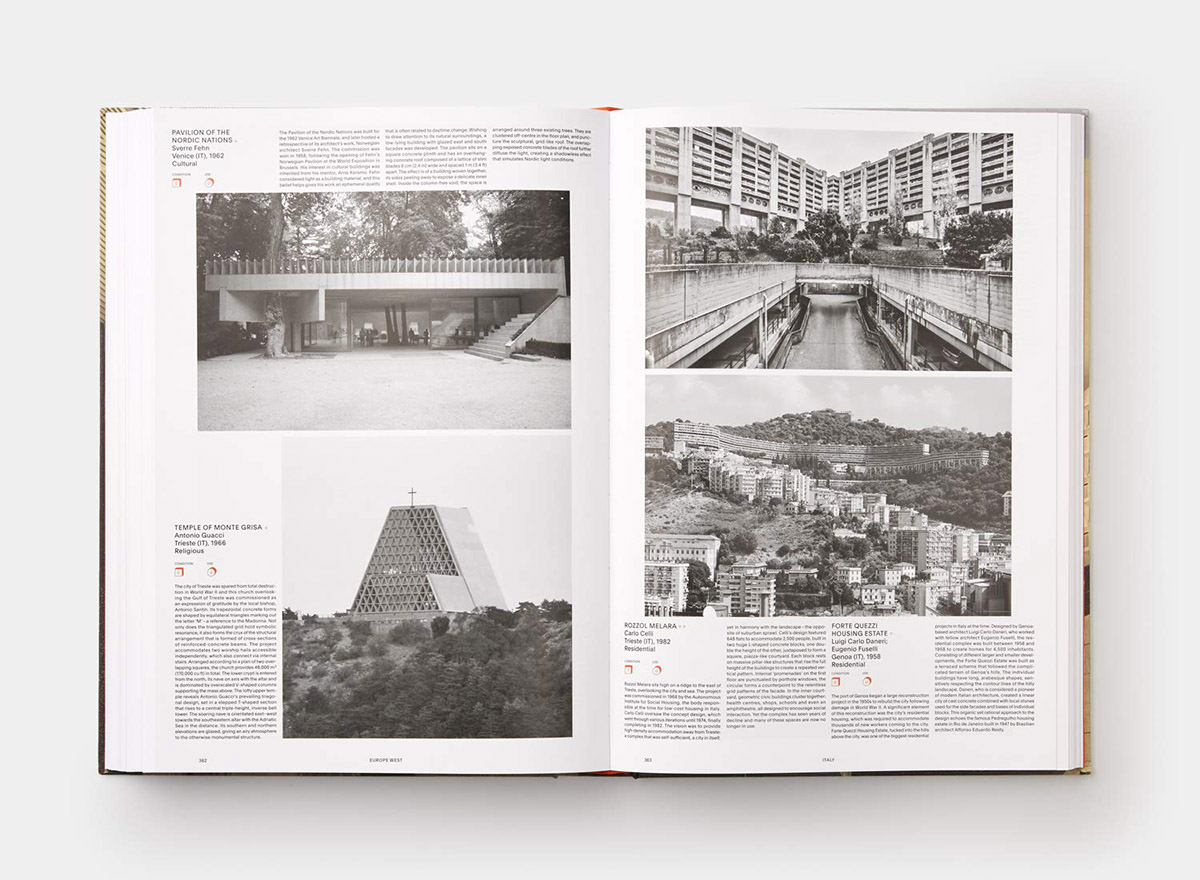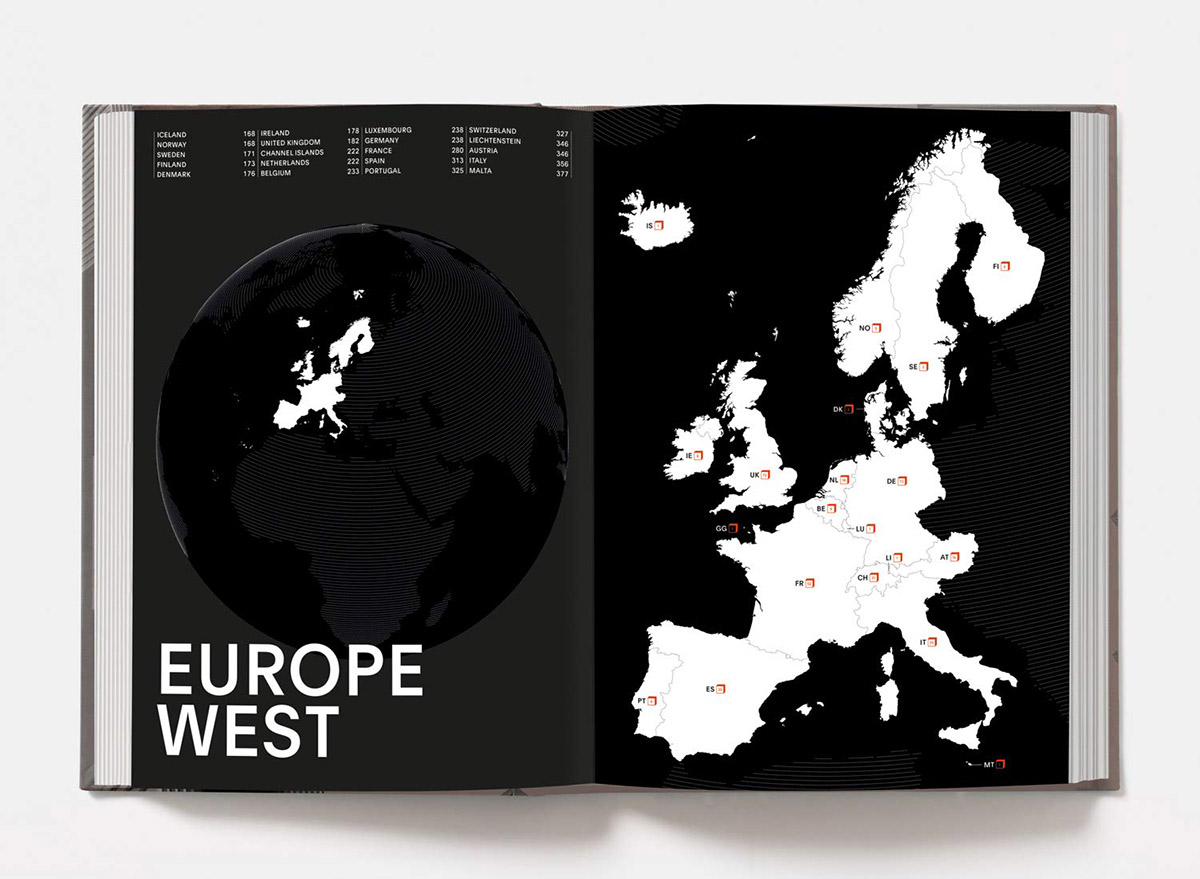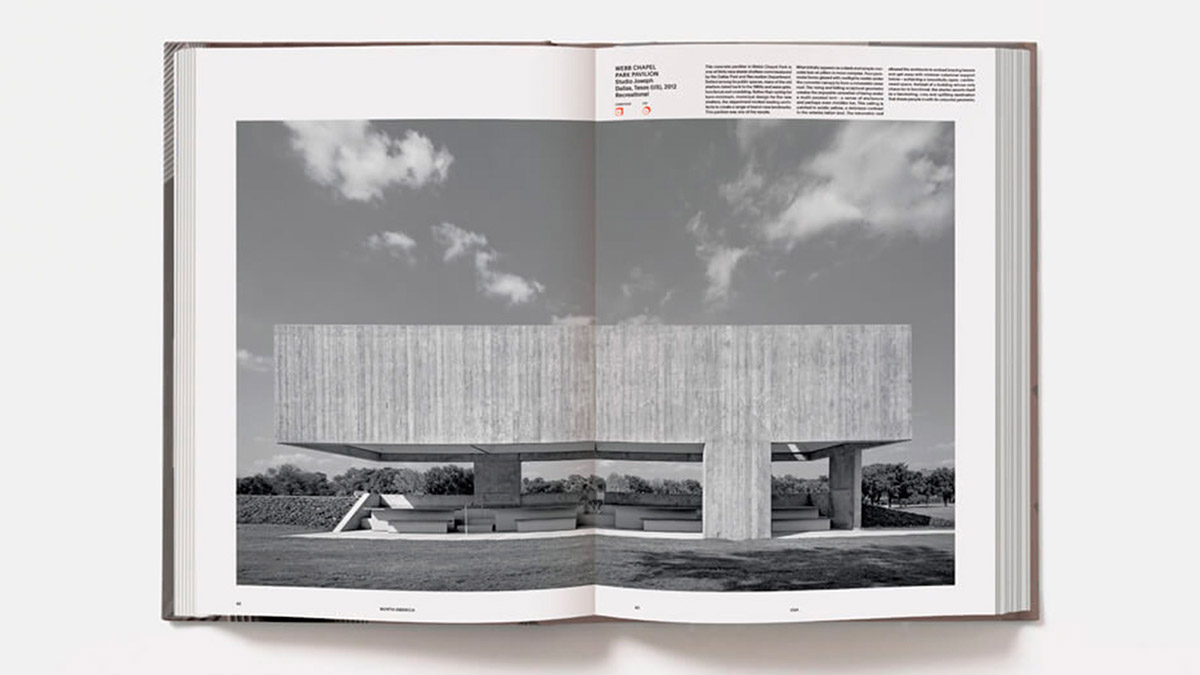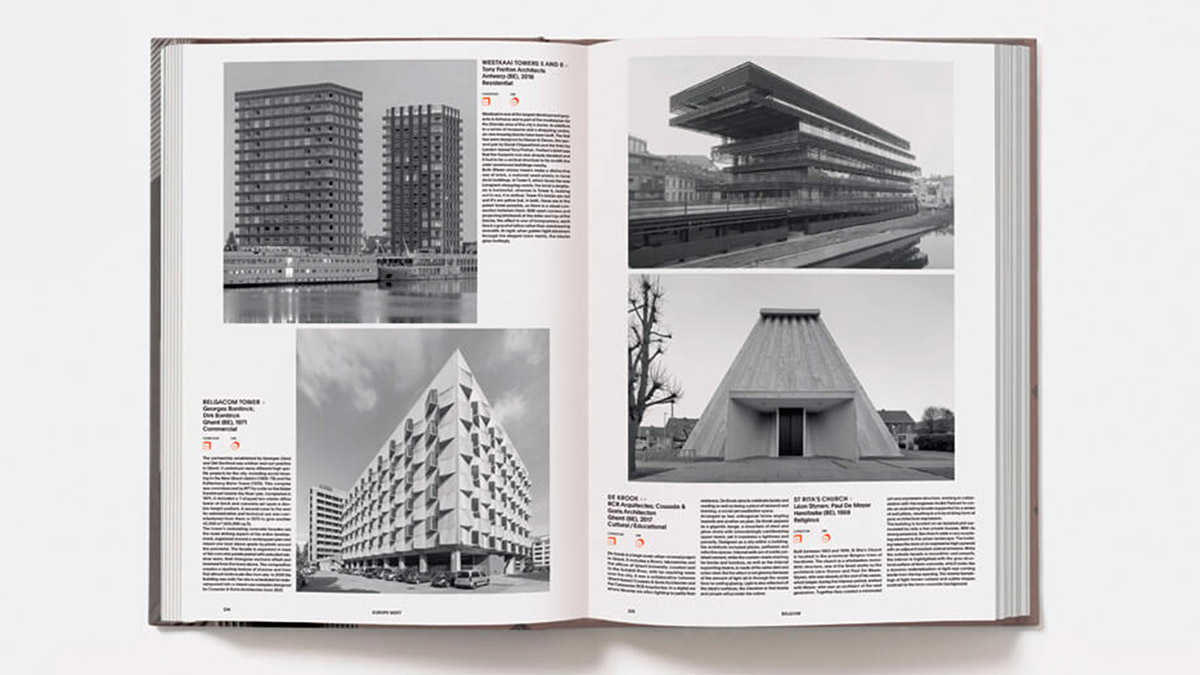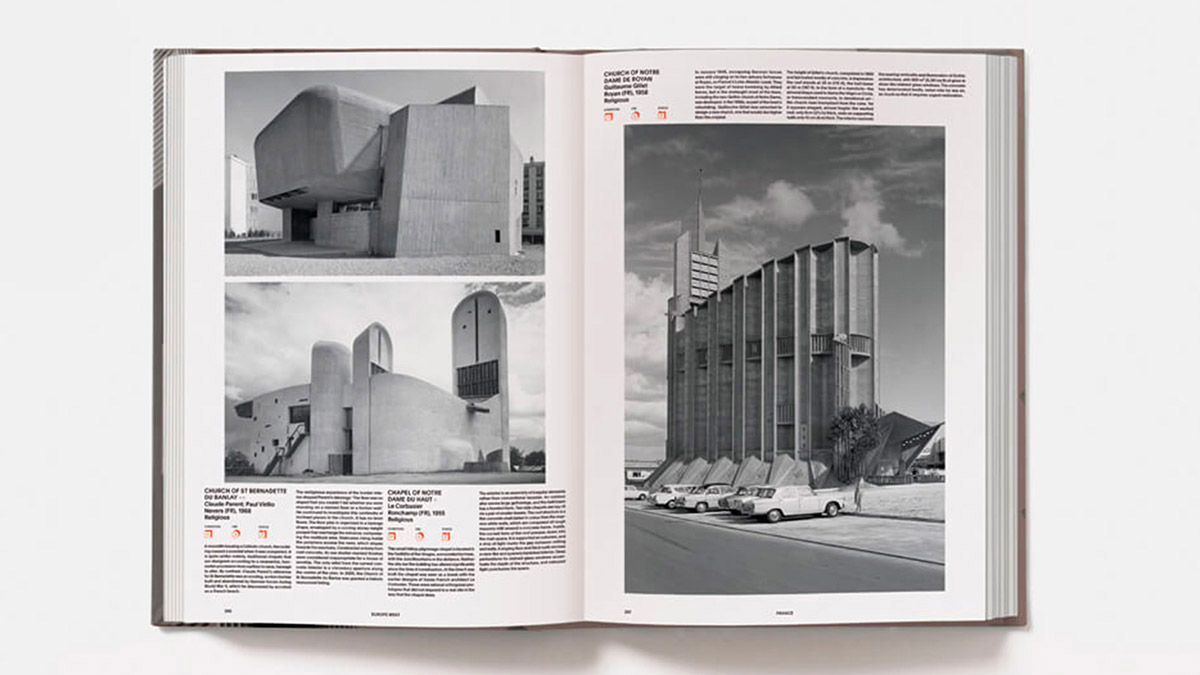BOOK:Atlas of Brutalist Architecture-Phaidon Publications
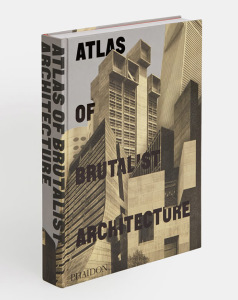 Brutalist Architecture flourished from 1951 to 1975, having descended from the Modernist Architectural movement of the early 20th Century. Brutalism became popular with governmental and institutional clients. Examples are typically massive in character (even when not large), fortress-like, with a predominance of exposed concrete construction, or in the case of the “brick Brutalists”, ruggedly combine detailed brickwork and concrete. In its ruggedness and lack of concern to look comfortable or easy, Brutalism can be seen as a reaction by a younger generation to the lightness, optimism, and frivolity of some 1930s and 1940s architecture. The book “Atlas of Brutalist Architecture” by Phaidon Publications is the only book to thoroughly document the world’s finest examples of Brutalist architecture. More than 850 buildings in 102 Countries (existing and demolished, classic and contemporary) are organized geographically into nine continental regions. Twentieth-century masters included in the book: Marcel Breuer, Lina Bo Bardi, Le Corbusier, Carlo Scarpa, Ernö Goldfinger, Frank Lloyd Wright, Louis Kahn, Oscar Niemeyer, and Paul Rudolph. Contemporary architects featured include: Peter Zumthor, Alvaro Siza, Coop Himmelb(l)au, David Chipperfield, Diller and Scofidio, Herzog & de Meuron, Jean Nouvel, SANAA, OMA, Renzo Piano, Tadao Ando, and Zaha Hadid.-Dimitris Lempesis
Brutalist Architecture flourished from 1951 to 1975, having descended from the Modernist Architectural movement of the early 20th Century. Brutalism became popular with governmental and institutional clients. Examples are typically massive in character (even when not large), fortress-like, with a predominance of exposed concrete construction, or in the case of the “brick Brutalists”, ruggedly combine detailed brickwork and concrete. In its ruggedness and lack of concern to look comfortable or easy, Brutalism can be seen as a reaction by a younger generation to the lightness, optimism, and frivolity of some 1930s and 1940s architecture. The book “Atlas of Brutalist Architecture” by Phaidon Publications is the only book to thoroughly document the world’s finest examples of Brutalist architecture. More than 850 buildings in 102 Countries (existing and demolished, classic and contemporary) are organized geographically into nine continental regions. Twentieth-century masters included in the book: Marcel Breuer, Lina Bo Bardi, Le Corbusier, Carlo Scarpa, Ernö Goldfinger, Frank Lloyd Wright, Louis Kahn, Oscar Niemeyer, and Paul Rudolph. Contemporary architects featured include: Peter Zumthor, Alvaro Siza, Coop Himmelb(l)au, David Chipperfield, Diller and Scofidio, Herzog & de Meuron, Jean Nouvel, SANAA, OMA, Renzo Piano, Tadao Ando, and Zaha Hadid.-Dimitris Lempesis

